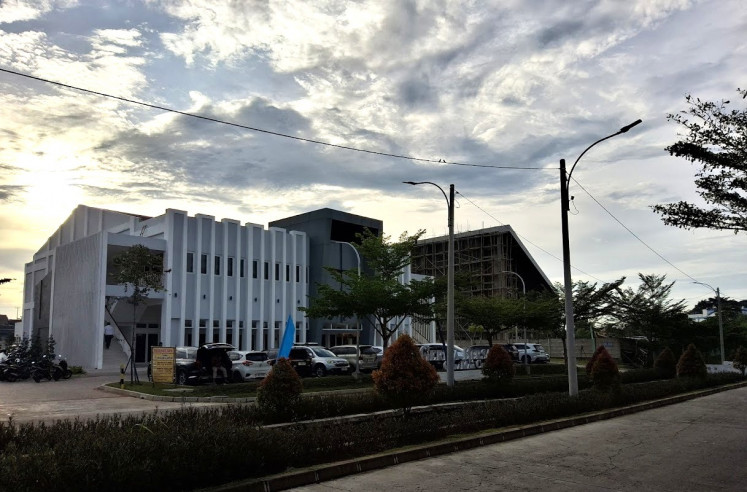Popular Reads
Top Results
Can't find what you're looking for?
View all search resultsPopular Reads
Top Results
Can't find what you're looking for?
View all search resultsToday’s technology key to business continuity post-COVID-19
Without the cloud, many organizations couldn’t do many of the things they do every day—a list that has grown exponentially during this global COVID-19 pandemic.
Change text size
Gift Premium Articles
to Anyone
H
ow the world does business was changing before the outbreak of COVID-19, yet what we have seen in recent weeks and months has accelerated this metamorphosis beyond all recognition.
Business continuity is nothing new. It is, quite simply, prudent business planning. But the speed and scale of the current global crisis has made organizations put much more stringent and robust measures in place to not only cope with the here and now, but to mitigate damage in years to come, should we witness something similar in the future.
Looking back, the last pandemic that threatened businesses in this way was H1N1, or swine flu, which happened a decade ago. Away from this, the world tends to experience a seismic shock to the system every 10-15 years that has a global negative impact on markets, economies, industries and employees.
One of the major impacts of the virus has been on the movement of people. It stopped operations and prevented people from being onsite. The damage and disruption to the manufacturing supply chain and industrial operations has been well documented too but, if there is a positive to be taken from it all, it is that it has shone a light on the technologies and innovation that are taking place today – all of which can mitigate the damage.
Read also: Cloud service boom will continue: Oracle
From the speed of modern business to the rapid response to COVID-19 enabling millions of people to work remotely, it’s hard to imagine a world without cloud technology. At no other point in time has there ever been such a need for the instant availability of information technology (IT) resources enabled by the cloud than during this pandemic.
The cloud transforms connectivity between people and businesses on a global scale. Cloud is everywhere; in our vehicles, on our television screens, in our phones and the user benefits of cloud computing include rapid deployment, high scalability and flexible pricing. Furthermore, it enables businesses to spend fewer financial resources on IT and less time on installing new IT capabilities as capacity if needed can be added through a self-service portal via the internet.
Without the cloud, many organizations couldn’t do many of the things they do every day—a list that has grown exponentially during this global COVID-19 pandemic. For example, it would be more challenging for executives to access real-time business sales information for their companies from anywhere in the world.
Today, employees do not need to be onsite as the modern industrial organization is connected by the cloud. People can operate remotely, and teams can still collaborate fully. This applies even to the engineers and other members of the workforce that need to be hands on with equipment.
This is because there are emerging technologies like big data, artificial intelligence, machine learning and virtual reality that have not only opened the door to remote access but also led to the advent of the digital twin – a virtual replica of machinery and factories – all powered by data. This means management, maintenance and control of machinery can be done digitally. Using 3D modelling and advanced engineering and visualization tools, sophisticated tasks can continue via an effective operational dashboard.
There are organizations that have been deploying this type of technology for some time, but in a post-COVID-19 world – however and wherever that may be – it is going to be a continuing trend. The upshot of this pandemic is that it has forced the hand of entire sectors to embrace innovative digital platforms available to facilitate a way of working that keeps both people connected and agile, and more importantly, safe.
Read also: Betting on B2B integration in the cloud to build resilience, competitive edge
But long before the world had heard of COVID-19, Asset Performance Management (APM) was being deployed by organizations to deal with precisely this challenge. Combining industrial big data, Cloud, artificial intelligence (AI), digital twin, and augmented reality (AR) technologies, APM means organizations can monitor their assets to identify, diagnose and prioritize impending equipment problems — continuously and in real time. This enables companies to reduce unscheduled downtime, prevent equipment failures, reduce maintenance costs, increase asset utilization, extend equipment life and identify underperforming assets.
It can stop issues before they occur, while appropriate steps can be undertaken by relevant engineers to prevent larger issues such as downtime, errors and total breakdowns. In turn, physical contact with the site in question is limited and business can continue as usual even though teams are working remotely. As industrial operations move to autonomous or near-autonomous modes, the ability to ensure reliable and safe performance while delivering production objectives becomes an imperative, and APM provides the framework and methods to ensure this.
With a proven ability to deliver real business benefit, cut time and expense and improve output, there is little doubt that APM is going to stay and is a core part of any long-term business continuity strategy.
---
Chief cloud officer at AVEVA. The views expressed are his own.










